Scientific name Plumeria | Tribe Plumerieae Rank Genus | |
Lower classifications Plumeria rubra, Plumeria alba, Plumeria obtusa, Plumeria pudica | ||
Plumeria (/pluːˈmɛriə/ is a genus of flowering plants in the dogbane family, Apocynaceae. Most species are deciduous shrubs or small trees. The species variously are indigenous to Mexico, Central America, India and the Caribbean, and as far south as Brazil, but are grown as cosmopolitan ornamentals in warm regions. Common names for plants in the genus vary widely according to region, variety, and whim, but frangipani or variations on that theme are the most common. Plumeria also is used directly as a common name, especially in horticultural circles.
Contents
- Planting plumeria cuttings frangipani
- Description
- Etymology and common names
- In culture
- Taxonomy
- References
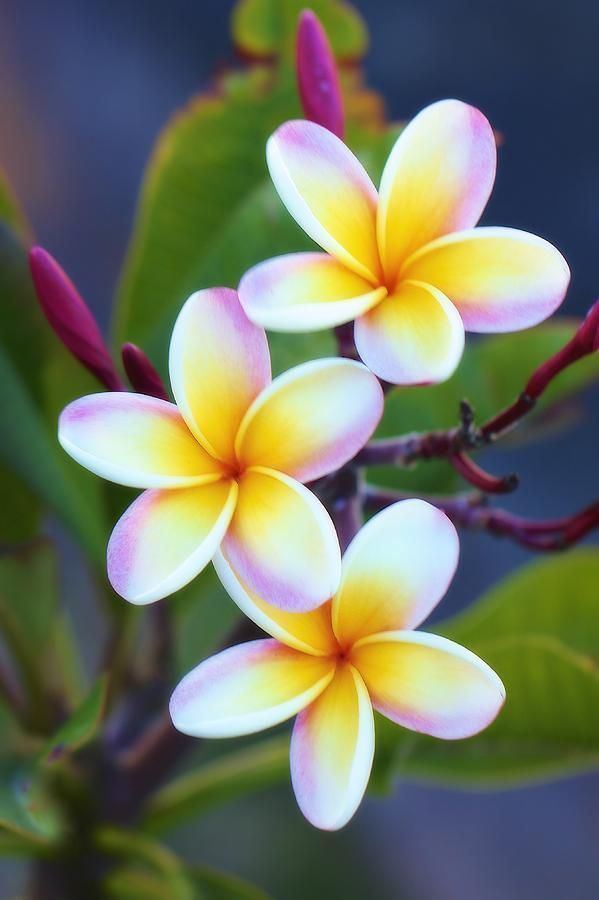
Planting plumeria cuttings frangipani
Description
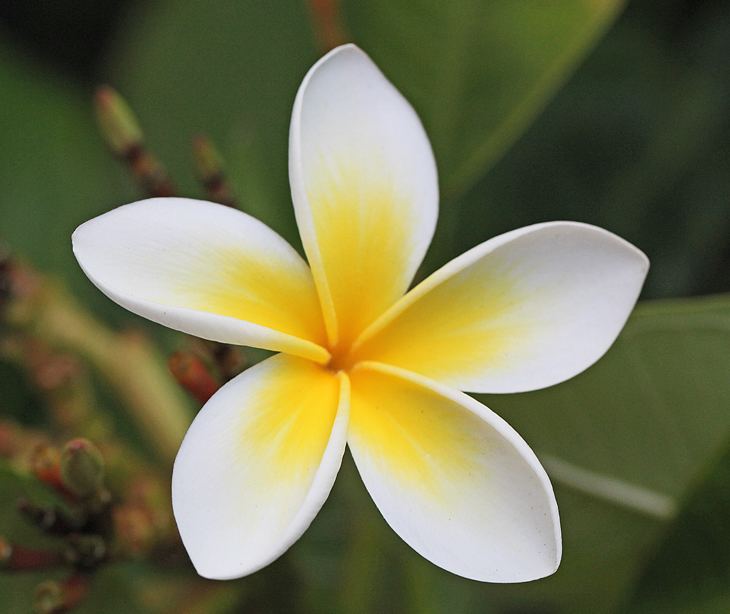
Plumeria flowers are most fragrant at night in order to lure sphinx moths to pollinate them. The flowers yield no nectar, however, and simply dupe their pollinators. The moths inadvertently pollinate them by transferring pollen from flower to flower in their fruitless search for nectar.
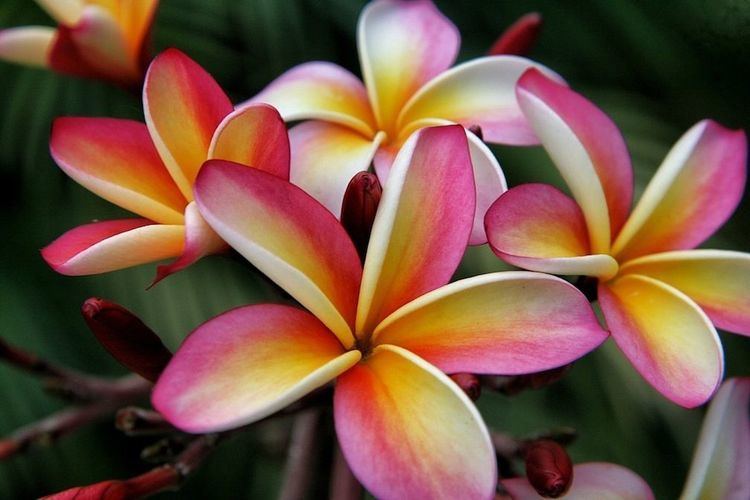
Plumeria species may be propagated easily from cuttings of leafless stem tips in spring. Cuttings are allowed to dry at the base before planting in well-drained soil. Cuttings are particularly susceptible to rot in moist soil.
There are more than 300 named varieties of Plumeria. American Plumeria society, Florida.
Etymology and common names
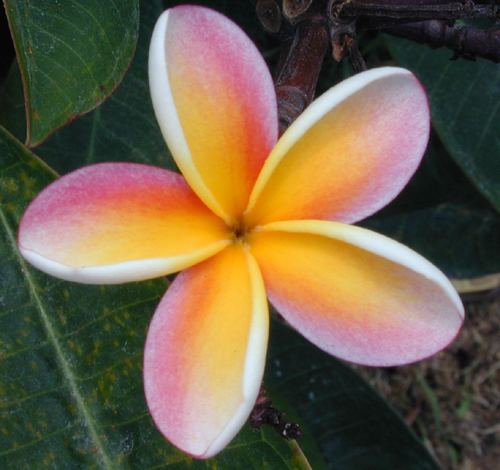
The genus is named in honor of the seventeenth-century French botanist Charles Plumier, who traveled to the New World documenting many plant and animal species. The common name "frangipani" comes from a sixteenth-century marquess of the noble family in Italy who invented a plumeria-scented perfume. Many English speakers also simply use the generic name "plumeria".
In Persian, the name is "yas" or "yasmin". In Hindi, the name is "champa" , In Marathi "Chafa" ,In Telugu "Deva ganneru" (divine nerium), in Meitei "Khagi Leihao" . In Hawaii, the name is "melia", although common usage is still "plumeria".In Malayalam it is called "pāla" and "chempakam". In Sri Lanka, it is referred to as araliya and (in English) as the Temple Tree. In Cantonese, it is known as 'gaai daan fa' or the 'egg yolk flower' tree. The name lilawadi (originating from Thai) is found occasionally. In Indonesia, where the flower has been commonly associated with Balinese culture, it is known as "Kamboja". In French Polynesia it is called a Tiare tree.
In culture
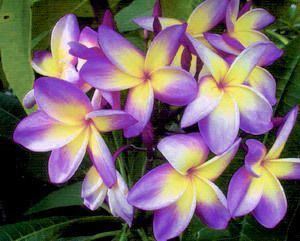
In Mesoamerica Plumerias have carried complex symbolic significance for over 2000 years, with striking examples from the Maya and Aztec periods into the present.
These are now common naturalised plants in southern and southeastern Asia. In local folk beliefs they provide shelter to ghosts and demons. The scent of the Plumeria has been associated with a vampire in Malay folklore, the pontianak; frangipani trees are often planted in cemeteries. They are associated with temples in both Hindu and Buddhist cultures.
In several Pacific islands, such as Tahiti, Fiji, Samoa, Hawaii, New Zealand, Tonga, and the Cook Islands Plumeria species are used for making leis. In modern Polynesian culture, the flower can be worn by women to indicate their relationship status - over the right ear if seeking a relationship, and over the left if taken.
Plumeria rubra is the national flower of Nicaragua, where it is known under the local name "Sacuanjoche" and P. alba is the national flower of Laos, where it is known under the local name "Champa".
In some Bengali culture most white flowers, and, in particular, plumeria (Bengali, চম্পা chômpa or চাঁপা chãpa), are associated with funerals and death.
In Tamil Film Enga ooru Paatukaran, the song "Shenbagame Shenbagame" is based on the flower, although it also refers to the name of the female lead, Shantipriya and a cow in the same film.
In the Philippines and Indonesia, Plumeria, which is known in Tagalog as Kalachuchi or Kalatsutsi (Plumeria acuminata), often is associated with ghosts and graveyards. Plumerias often are planted on cemetery grounds in both countries. They are also common ornamental plants in houses, parks, parking lots, etc. in the Philippines. Balinese Hindus use the flowers in their temple offerings.
In Malaysia, the plumeria's scent is known to be associated with the pontianak.
Indian incenses fragranced with Plumeria (Plumeria rubra) have "champa" in their names. For example, Nag Champa is an incense containing a fragrance combining Plumeria and sandalwood. While Plumeria is an ingredient in Indian champa incense, the extent of its use varies between family recipes. Most champa incenses also incorporate other tree resins, such as Halmaddi (Ailanthus triphysa) and Benzoin resin, as well as other floral ingredients, including Champaca (Magnolia champaca), Geranium (Pelargonium graveolens), and Vanilla (Vanilla planifolia) to produce a more intense, Plumeria-like aroma.
In the dialect of Kannada spoken in the Old Mysore region of Karnataka of southern India, the flower is called DevagaNagale. In the Western Ghats of Karnataka, the local people use cream colored Plumeria in weddings. The groom and bride exchange Plumeria garland at the wedding. It is alternatively called Devaganagalu or Devakanagalu (God's Plumeria). Red colored flowers are not used in weddings. Plumeria plants are found in most of the temples in these regions.
In Sri Lankan tradition, Plumeria is associated with worship. One of the heavenly damsels in the frescoes of the fifth-century rock fortress Sigiriya holds a 5-petalled flower in her right hand that is indistinguishable from Plumeria.
In Eastern Africa, frangipani are sometimes referred to in Swahili love poems.
Some species of Plumeria have been studied for their potential medicinal value.
Taxonomy
The genus Plumeria includes about a dozen accepted species, and one or two dozen open to review, with over a hundred regarded as synonyms.
Plumeria species have a milky latex that, like many other Apocynaceae contains poisonous compounds that irritate the eyes and skin. The various species differently in their leaf shape and arrangement. The leaves of Plumeria alba are narrow and corrugated, whereas leaves of Plumeria pudica have an elongated shape and glossy, dark-green color. Plumeria pudica is one of the everblooming types with non-deciduous, evergreen leaves. Another species that retains leaves and flowers in winter is Plumeria obtusa; though its common name is "Singapore," it is originally from Colombia. Accepted species
- Plumeria ambigua Müll.Arg. = Himatanthus bracteatus (A.DC.) Woodson
- Plumeria angustiflora Spruce ex Müll.Arg. = Himatanthus attenuatus (Benth.) Woodson
- Plumeria articulata Vahl = Himatanthus articulatus (Vahl) Woodson
- Plumeria attenuata Benth = Himatanthus attenuatus (Benth.) Woodson
- Plumeria bracteata A.DC. = Himatanthus bracteatus (A.DC.) Woodson
- Plumeria drastica Mart. = Himatanthus drasticus (Mart.) Plumel
- Plumeria fallax Müll.Arg. = Himatanthus drasticus (Mart.) Plumel
- Plumeria floribunda var floribunda = Himatanthus articulatus (Vahl) Woodson
- Plumeria floribunda var. acutifolia Müll.Arg. = Himatanthus bracteatus (A.DC.) Woodson
- Plumeria floribunda var. calycina Müll.Arg. = Himatanthus bracteatus (A.DC.) Woodson
- Plumeria floribunda var. crassipes Müll.Arg. = Himatanthus bracteatus (A.DC.) Woodson
- Plumeria hilariana Müll.Arg. = Himatanthus obovatus (Müll.Arg.) Woodson
- Plumeria lancifolia Müll.Arg. = Himatanthus bracteatus (A.DC.) Woodson
- Plumeria latifolia Pilg. = Himatanthus obovatus (Müll.Arg.) Woodson
- Plumeria martii Müll.Arg. = Himatanthus bracteatus (A.DC.) Woodson
- Plumeria microcalyx Standl. = Himatanthus articulatus (Vahl) Woodson
- Plumeria mulongo Benth. = Himatanthus attenuatus (Benth.) Woodson
- Plumeria obovata Müll.Arg. = Himatanthus obovatus (Müll.Arg.) Woodson
- Plumeria oligoneura Malme = Himatanthus obovatus (Müll.Arg.) Woodson
- Plumeria phagedaenica Benth. ex Müll.Arg. 1860 not Mart. 1831 = Himatanthus drasticus (Mart.) Plumel
- Plumeria phagedaenica Mart. 1831 not Benth. ex Müll.Arg. 1860= Himatanthus phagedaenicus (Mart.) Woodson
- Plumeria puberula Müll.Arg. = Himatanthus obovatus (Müll.Arg.) Woodson
- Plumeria retusa Lam. = Tabernaemontana retusa (Lam.) Pichon
- Plumeria revoluta Huber = Himatanthus stenophyllus Plumel
- Plumeria speciosa Müll.Arg. = Himatanthus bracteatus (A.DC.) Woodson
- Plumeria sucuuba Spruce ex Müll.Arg. = Himatanthus articulatus (Vahl) Woodson
- Plumeria tarapotensis K.Schum. ex Markgr. = Himatanthus tarapotensis (K.Schum. ex Markgr.) Plumel
- Plumeria velutina Müll.Arg. = Himatanthus obovatus (Müll.Arg.) Woodson
- Plumeria warmingii Müll.Arg. = Himatanthus obovatus (Müll.Arg.) Woodson
